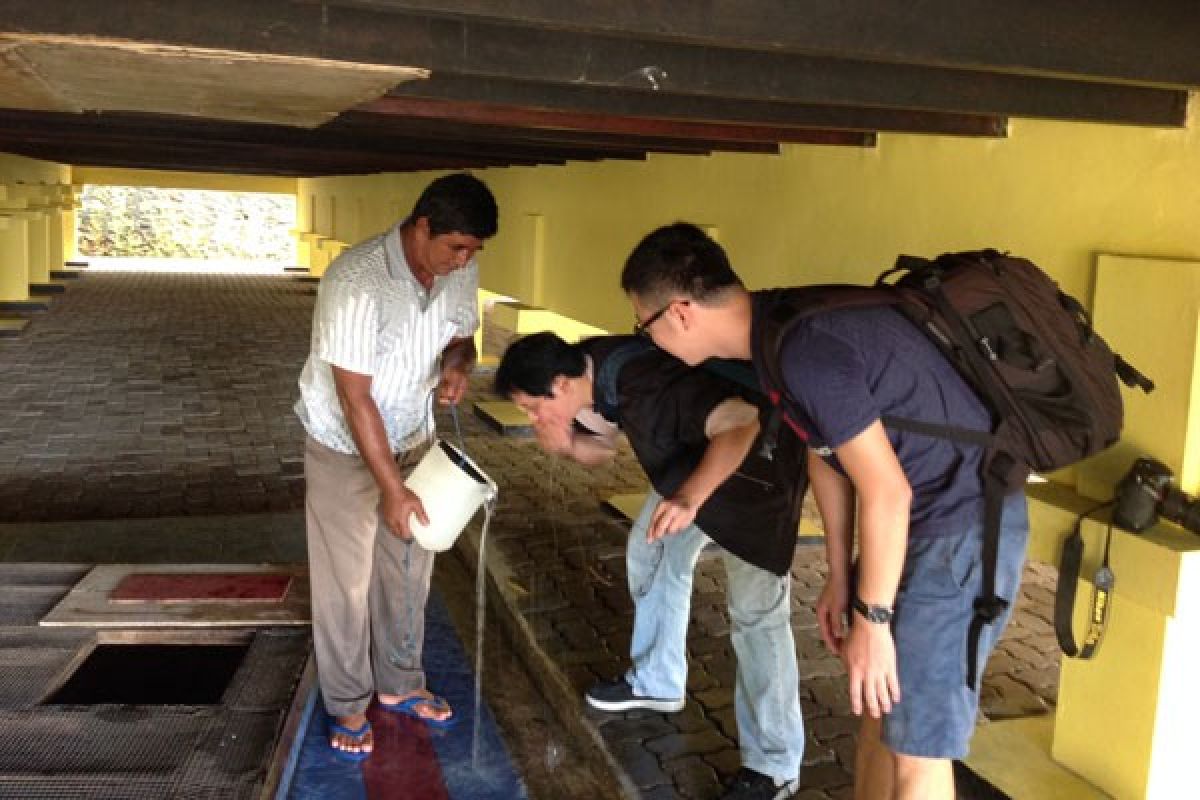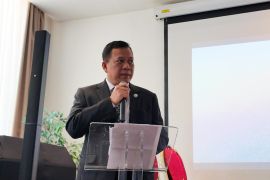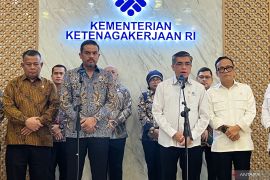Today, people need not worry, as bees are no longer plentiful on the island, which is today known for its renowned scenery and remains memorable due to its beautiful nature, hospitable people and long history.Tanjung Pinang, Riau Islands (ANTARA News) - Morphologically, it is a very small island of 3.5 square kilometers and populated by some 3,000 people.
However, this small island has many interesting historical sites, a picturesque panorama and unique geological features worth visiting to complete a trip to Riau Islands, known for its people, who are always hospitable.
This is Penyengat Island. As its name also means "hornet", the island once was home to many bees that too often stung visiting sailors when they were seeking fresh water centuries ago from wells on the island.
Today, people need not worry, as bees are no longer plentiful on the island, which is today known for its renowned scenery and remains memorable due to its beautiful nature, hospitable people and long history.
Of note, the islands long history has left behind many sites that are closely connected to Malay culture. In fact, the local government has proposed to the United Nations Organization for Education, Science and Culture (UNESCO) that Penyengats historical locations be named as world heritage sites.
Fresh water
Although it was discovered many centuries ago, the fresh water from several wells on the island is still serving the needs of the islands people. One well is located below the Penyengat Islands Customs Hall, which functions to welcome guests and as a reception venue for very important persons.
According to Anwar, who care for the well, the fresh water well is frequently visited by tourists who are tired after travelling around the island.
Tourists can enjoy fresh, clear and pristine water from the old well to wash faces and hands, or even drink the water.
"This 2.5-m deep well never runs dry, although this is the dry season and people keep taking the water," Anwar said.
Anwar, who has cared for the well for 12 years, explained that the fresh water, which was discovered in the 16th century, is not salty like water often found adjacent to the sea, though the fresh water well on Penyengat Island is located only 30 meters from the beach.
Pong-pong
Tourists can travel on a pong-pong, an engine-powered wooden boat with 12 to 15 seats and covered by a roof, for approximately 15 minutes from Sri Bintan Pura port, Tanjung Pinang, to the island, which was once the center of administration, customs, Islam and Malay culture in the 19th century.
The ticket price for the boat costs some Rp15,000 per person.
Visitors find that is true, as said by Riau Islands Governor Nurdin Basirun, that the Tanjung Pinang people, including those living on the island, are polite, friendly, gentle and loyal.
"Tanjung Pinang is a beautiful city with its traditional foods and natural charms, showing a waff of Riau Islands to call on people to visit," the governor said, when delivering his speech at the opening of Maritime Festival 2016 in Tanjung Pinang, Riau Islands, on October 29.
This atmosphere makes those visiting Penyengat Island feel comfortable and safe, especially when visitors to the island tour the yellow majestic mosque, the Grand Masjid of Sultan Riau, which welcomes them upon arrival.
Among those visitors enjoying their recent trip to the island were three journalists from Vietnam, China and Japan, who were on assignment to see Tanjung Pinangs social atmosphere, attractions and sample typical foods, such as grilled fish and a sea shell, which is locally known as "gonggong" (L. canarium). This sea snail has been declared a city icon of Tanjung Pinang.
The journalists asked a businessman from a travel bureau in Tanjung Pinang, Sapril Sembiring, to accompany them as they travelled throughout the island, which is also called Island of Mas Kawin or "Dowry".
The name was given because the island had been a dowry from Sultan Mahmud, who built Penyengat Island into a kingdom country, to Princess Engku Putri or Raja Hamidah, Raja Hajis princess, who is famous in Riau-Lingga, Johor and Pahang history.
By renting a motor rickshaw for an hour, at a rate of Rp30,000 per trip, Sapril took the three journalists to visit the historic sites on the island, which is also called Air Tawar Island, named after the fresh water wells.
The foreign journalists expressed their admiration for the hospitality of the local people, and were interested in the islands historical sites, especially the fresh water wells.
"Please taste the water from the old well. You can wash your face or drink it," said Sapril, who is also a member of the organizing committee of the Maritime Festival of Riau Islands 2016. Sapri was in charge of organizing the arriving yachts from participating countries, including Australia, Singapore, the United States, Switzerland, England, France, the Netherlands, Norway and Malaysia.
"Yes, the water is clear and fresh," said Xinhua Chinese reporter Du Yu, after washing his face and drinking water from the old well.
The foreign journalists ended their touring at the Grand Masjid of Sultan Riau, after visiting several historical sites, including the tomb of the Gurindam 12 author Raja Ali Haji, who was also Riau's famous poet, composer of Malay grammar, spelling and lexicography, who worked to assure that the Riau Malay language is used for correspondence, books and literature.
Gurindam is a type of irregular verse form found in traditional Malay poetry. It is a combination of two clauses, where the relative clause forms a line and is thus linked to the second line, or the main clause. Each pair of lines provides complete ideas within the pair and has the same rhyme in its end. There is no limit on the number words per line, and neither is the rhythm per line fixed.
Returning to the mosque, Sapril said, "The color of golden yellow on the mosque gives the sense of grandeur or splendor," adding that the Sultan Riau Mosque, which was built by Sultan Mahmud in 1803, was also known as the "Eggwhite" Masjid, because the initial construction used a mixture of soil and egg whites as adhesive materials.
During their stay in Tanjung Pinang, the foreign journalists also had the opportunity to eat Tanjung Pinangs sea shell gonggong, which is only found in the city. The uniqueness of gonggong makes it Tanjung Pinangs new city icon.(*)
Reporter: Bambang Purwanto
Editor: Heru Purwanto
Copyright © ANTARA 2016












